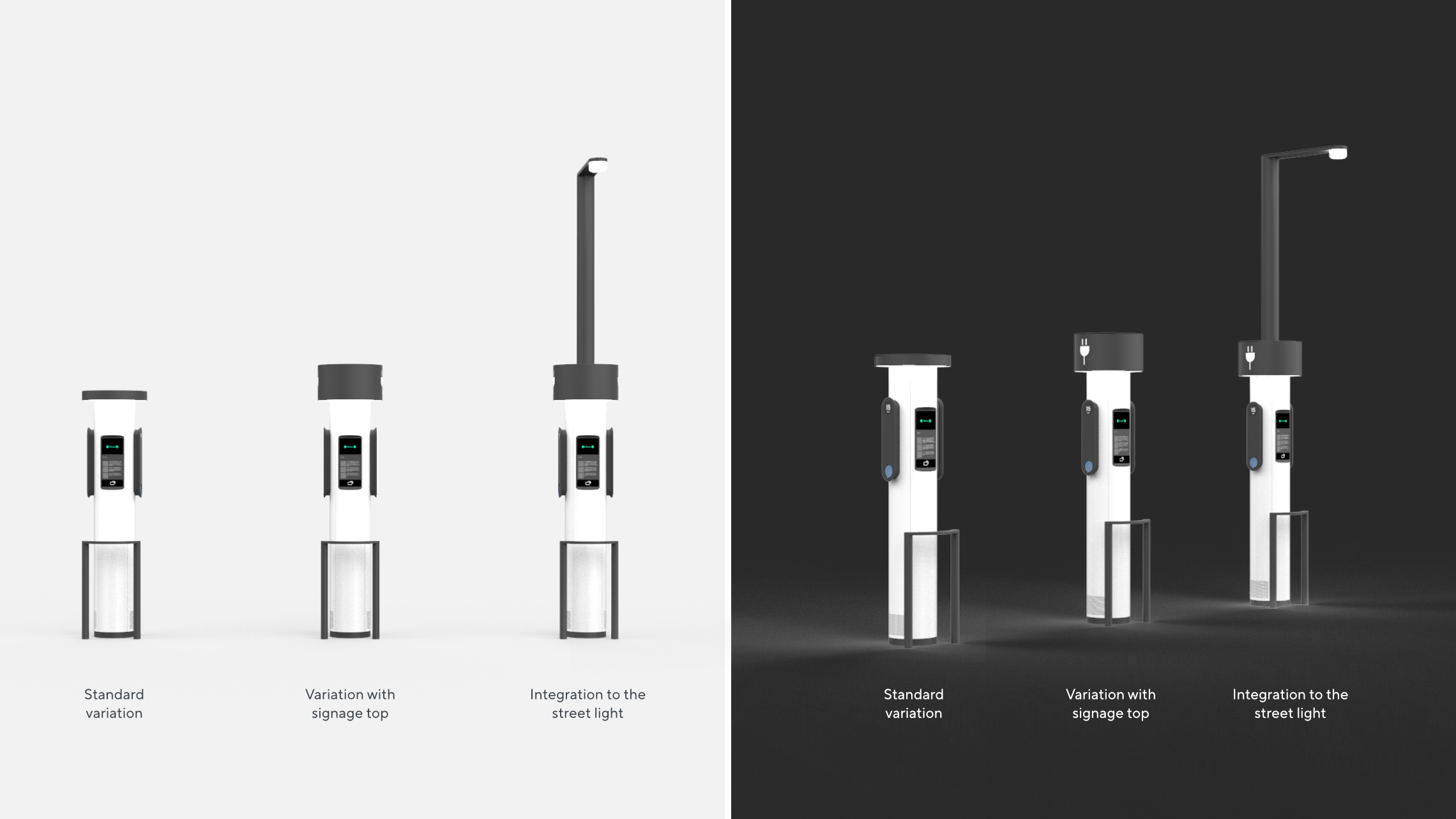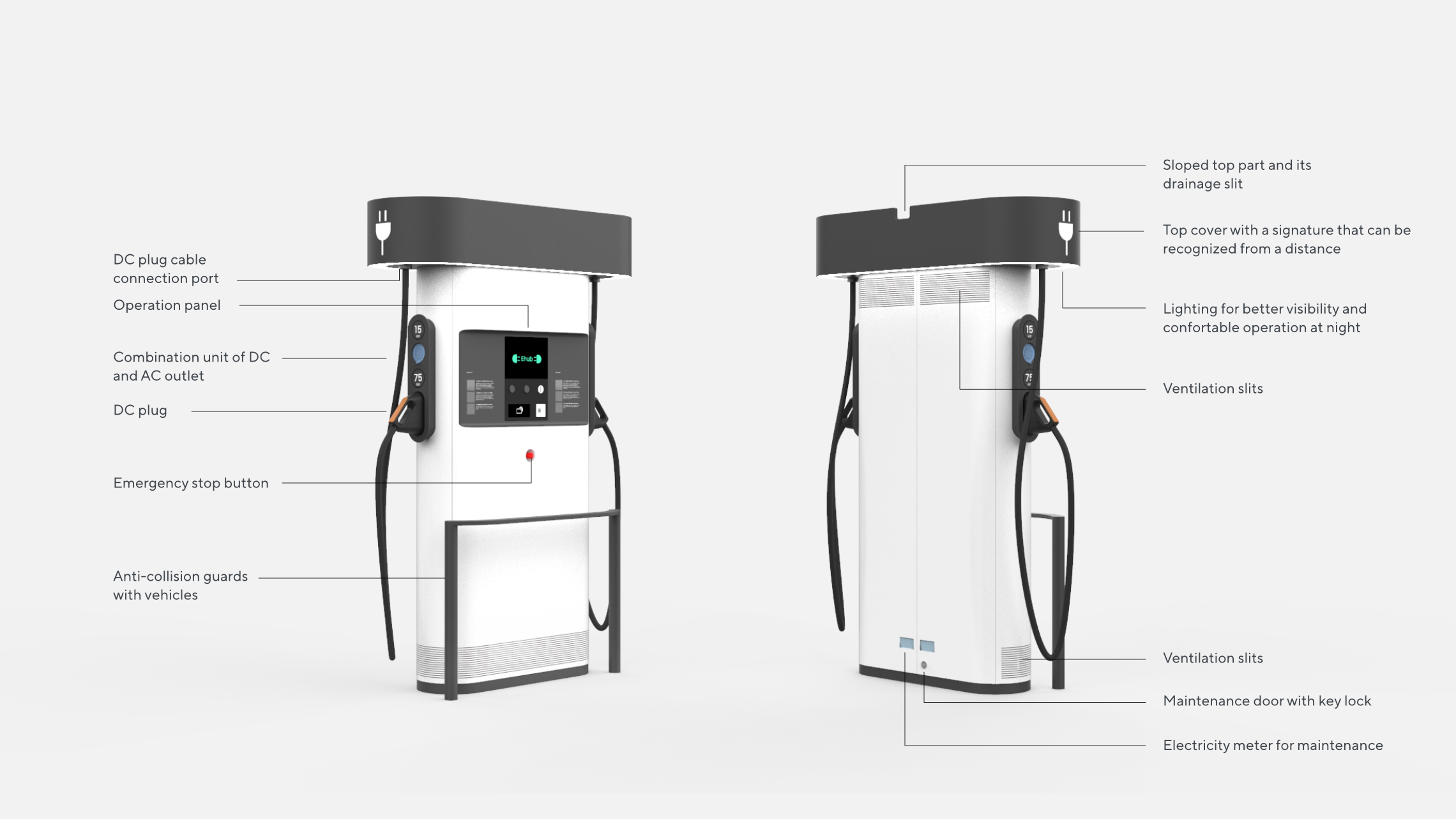Competitor Analysis
Ability to update flexible for the future
I thoroughly researched manufacturers from around the world, including the United States, European countries, and China, and analyzed their products' strengths. Likewise, I studied their weaknesses to determine what features were essential to the new concept and differentiate the new concept from them.
One of the key features common to all manufacturers is the charging station unit's ability to update in the future. EVs and their batteries' technology are advancing every day, and the demand for EV charging is thus changing continuously. The charging station is needed to be flexible enough to adapt and update the inner components for future changes.




























